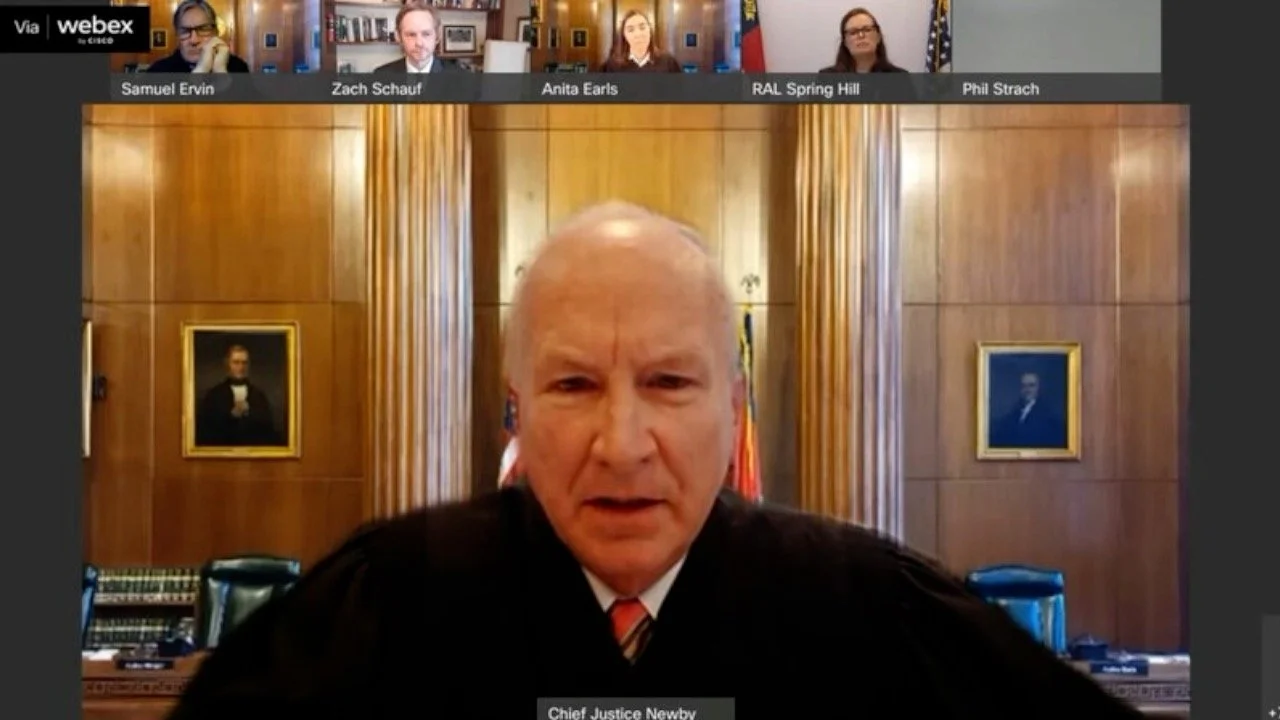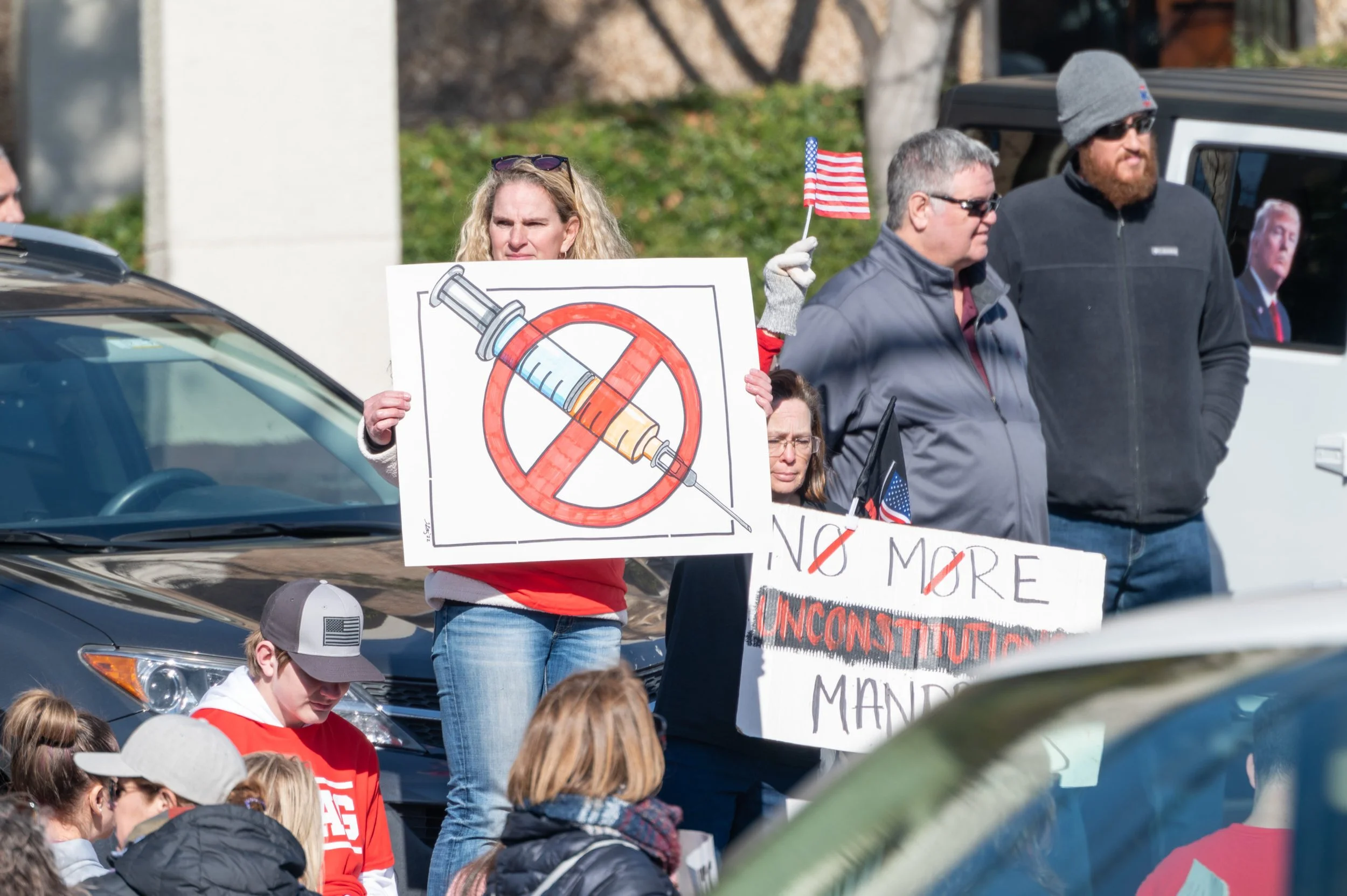State Supreme Court hears arguments for, against N.C. election maps
By Mitch Kokai, Carolina Journal
North Carolina's legislative and congressional election maps now sit in the hands of the N.C. Supreme Court, after 90 minutes of oral arguments for and against the maps Wednesday morning.
Critics contend the Republican-led General Assembly drew maps to dilute Democrats' voting power.
"In a partisan gerrymander, the leaders already in power manipulate district lines to subvert the will of the people," argued Stanton Jones, an attorney representing one of three sets of plaintiffs challenging the maps. "The intent and effect is to predetermine the outcome of elections and entrench the majority party in power regardless of how the people vote."
Chief Justice Paul Newby, a Republican, repeatedly questioned the plaintiffs' lawyers about how the court should address their concerns.
"Why can't you say that the will of the people is established by the precise language of the constitution?" Newby asked. "The precise language of the Constitution in Article II gives the General Assembly the authority to redistrict, and it sets out the objective standards that ought to be used. Why isn't that the will of the people?"
Newby also questioned the absence of clear rules separating acceptable election maps from unconstitutional maps.
"Here we get into separation-of-power issues if there's not a clear constitutional standard," he said.
Katherine McKnight, arguing on behalf of legislative defendants, cited a similar concern. "What you have here is the lower court telling you that plaintiffs have not identified any line between what is permissible partisan advantage and what is impermissible."
Other justices asked questions suggesting their openness to using state constitutional provisions to reject the maps.
"The trial court says ... in addressing agreement with the United States Supreme Court, that 'excessive partisanship in districting leads to results that are incompatible with democratic principles,'" Justice Michael Morgan, a Democrat, said. "Doesn't that demonstrate that this case is justiciable, in terms of our state constitution, under the Free Elections Clause?"
"Why does it matter how far away from permissible these maps are if they prevent the will of the people from being carried out?" asked Justice Robin Hudson, a Democrat.
Defense attorney Phil Strach argued that the Supreme Court would be entering new legal territory by ruling against partisanship in election mapmaking.
"If the court believes it can divine some standard, that no other ... appellate court in North Carolina has ever done before, it's going to have to legislate the result," Strach said. "It's got to provide an objective standard or rule that the legislature can follow. It's not enough just to say, 'Oh, follow the will of the people.'"
Strach distinguished North Carolina from Florida, where voters enacted a constitutional provision against partisan redistricting. "The people of Florida decided, 'We want to do something about this, and this is what we're going to do.' That's not been done in North Carolina. This court would be doing it for the people. It would not be interpreting an act of the people."
At least one justice signaled an interest in adding party affiliation as a protected class under the N.C. Constitution.
"I would assume you would agree that the state Equal Protection Clause protects black voters from intentional racial discrimination in redistricting," said Justice Anita Earls, a Democrat. "Why shouldn't our state constitution Equal Protection Clause also protect people from ... intentional discrimination on the basis of party affiliation?"
Strach warned the Supreme Court against basing any decisions on computer simulations that label the enacted maps as partisan "outliers."
"These simulations, this computer evidence, which is really all the plaintiffs have, ... they are alluring on the surface, but they are destined to cause this court more problems than they can solve."
All seven justices took part in the oral arguments. Three justices — Earls, fellow Democrat Sam "Jimmy" Ervin IV, and Republican Phil Berger Jr. — issued separate orders earlier this week rejecting requests that they remove themselves from the case.
With the full court involved in deliberations, that means Democrats hold a 4-3 majority. Those numbers could prove important if the court's decision breaks down along party lines.
Justices must decide whether to affirm or reverse a unanimous Jan. 11 ruling from a bipartisan three-judge Superior Court panel. That panel upheld the maps.
The trial judges, two Republicans and one Democrat, agreed that the election maps bore evidence of "intentional, pro-Republican redistricting." But the same panel agreed unanimously that nothing within North Carolina's political or legal history suggested that lawmakers had violated the state constitution when drawing the challenged maps.
There is no set timetable for a ruling from the Supreme Court. But state redistricting law and North Carolina's current election timeline point toward a relatively quick decision.
Candidate filing is set to resume in 22 days, on Feb. 24, for a May 17 primary election. Meanwhile, state law requires courts to give the General Assembly at least two weeks to correct problems with rejected election maps.
The Supreme Court already has delayed the primary election once, from March to May. Justices could push back the primary date again. Such a decision also could affect the candidate filing period.
The Supreme Court already has declared that candidates who filed for office last December in anticipation of a March primary will remain on the ballot unless they withdraw. The only exceptions are those candidates who filed in congressional or legislative election districts that end up thrown out because of a court ruling.



